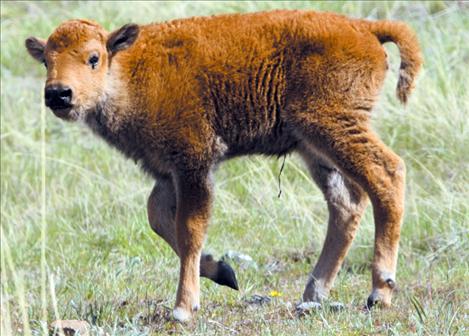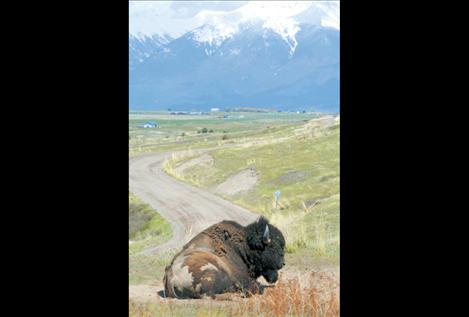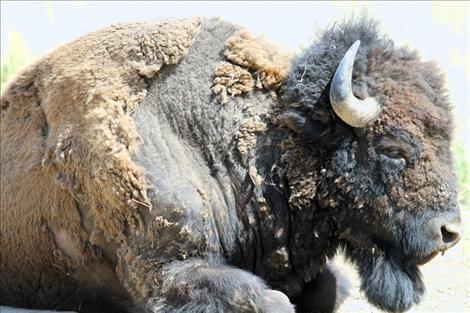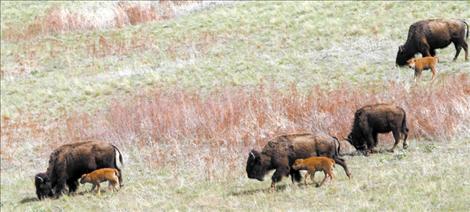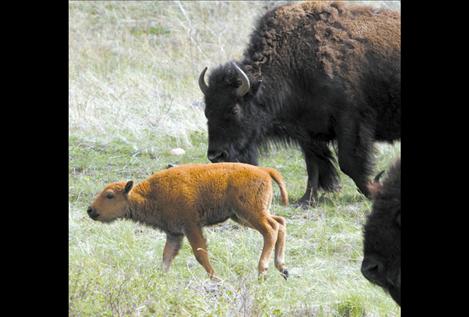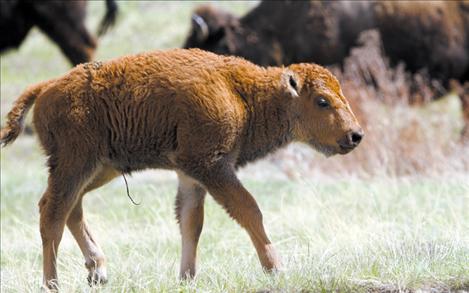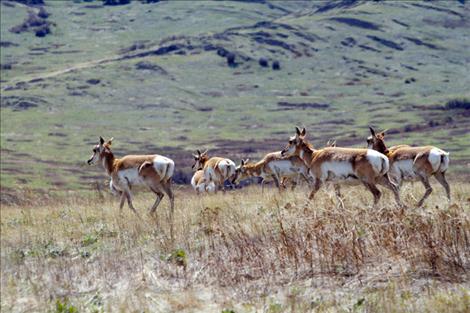National Bison Range welcomes new website, bison babies
Hey savvy news reader! Thanks for choosing local.
You are now reading
1 of 3 free articles.
MOISE — Equipped with a new website and newborn bison calves, the National Bison Range in Moise is ready to start the 2013 season.
“At this point, unless the snows come in again, we’ve finished grading Red Sleep Mountain Drive and have dust control technicians coming in early next week,” Outdoor Recreation Planner Pat Jamieson said. “We should be all set to open (Red Sleep Mountain Drive) May 11.”
Red Sleep Mountain Drive is the park’s most scenic road, twisting and winding through hills and valleys while offering seldom-seen views of a piece of Montana untouched by time and man. Range employees are in the process of opening several gates, allowing the bison to move freely to different areas of the park. This is part of a bi-weekly shift during which range employees move the animals to greener pastures higher in the park.
According to National Bison Range Biologist Daniel Sharps, the semi-wild population is moved from pasture to pasture on the two-week cycle to insure the herd grazes properly. Employees have opened parts of the park and are allowing the bison to move to other areas freely, thus eliminating a good deal of stress and danger to the animals and handlers alike.
Extra caution is especially warranted this time of year, as with the spring weather come newborn calves.
“Our first calf was born April 10,” Jamieson said. “We had 66 last year, and it’s hard to say how many we’ll have this year. Sometimes there’s more; sometimes there’s less.”
The range’s 340-strong herd currently has about 40 newborn calves so far, and at this time of year, it is not uncommon to have several calves born on the same day.
“They’re small little guys,” Sharps said of this year’s newborn bison. “They get rambunctious, so injury can happen, but for the most part all the calves I’ve seen look to be in pretty good shape .... we use caution when moving them because we do have young animals, and some of them can’t travel yet. Most are very precocious, and within 20 minutes of birth, they’re up and moving.”
Sharps said the average calf weighs between 35 and 70 pounds at birth. During the fall roundup in October, those same calves can weight up to 400 pounds.
Jamieson said the range lost three to four animals over the winter to old age and harsh conditions — two of the lost cows were 18 and 21 years old.
“Their teeth wear down is basically what happens,” Jamieson said. “They can’t eat enough since the dry grass isn’t as nutritious as green grass, and they go down.”
The range recently published a new, updated website and began a Facebook page — both of which contain stunning pictures, lots of educational material and important news concerning the range and its operations.
“(The website) is something the (U.S. Fish and Wildlife) service put together to get all the sites on the same page, to be similar,” Jamieson said. “We’re trying to keep it up a little bit more, and it’s something I can do in-house. We’ve been using the Facebook page to put out a lot of photos, tell people what’s going on with the babies, the counts, that kind of thing.”
Jamieson said her favorite aspect of the new website is a page she designed called, “A Moment in Time.” The page displays photos from the range and a bit of interesting or intriguing information about the image.
Recently, range employees set up a motion-activated infrared camera on one of the winter-killed bison carcasses. Over a series of nights, the camera captured coyotes, a golden eagle, wolf, and grizzly bear with two cubs feeding on the carcass.
Jamieson said the grizzly and her cubs was probably the most significant event, as the range doesn’t have adequate forest habitat to support a grizzly bear.
“We don’t normally have grizzlies here, that’s what was exciting,” Jamieson said. “We thought we’d catch a black bear on some of these old carcasses that have been out here all winter, and we’ve been catching golden eagle and coyotes, but the wolf and the grizzly bear were pretty exciting.”
Jamieson said the wolf didn’t stay on the carcass very long, so she doesn’t know how long it stayed in the park and may have just been passing through.
















